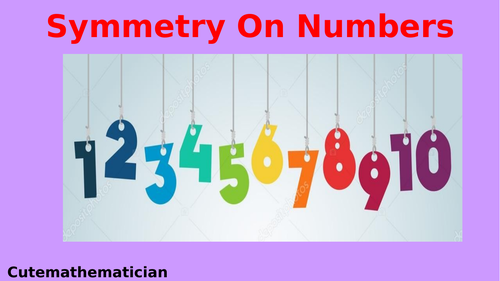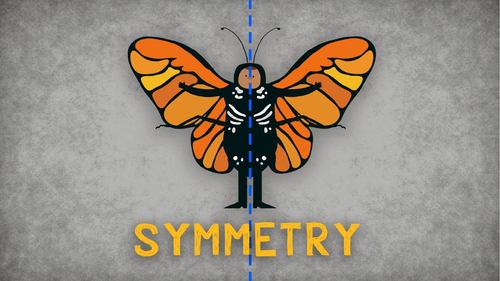
36Uploads
13k+Views
98Downloads
All resources
Sale

Himachal Pradesh Powerpoint Presentation (PPT)/Lesson/ 20 Slides
The presentation contains 20 SLIDES:
Himachal Pradesh location
The neigbourhood of Himachal Pradesh
Identity Symbols
Facts about Himachal Pradesh
Festivals
Food and Clothing of Himachal Pradesh
Forts of Himachal Pradesh
Tourism of Himachal Pradesh
Sale

Symmetry In Numbers Powerpoint Presentation (PPT)/Lesson/ 11 Slides
Contains 11 SLIDES
Objective: The student will be able to identify whether a given number has symmetry, to draw the line of symmetry, how many lines of symmetry a number can have and the type of symmetry the number has like horizontal, vertical and diagonal.
The presentation contains:
The symmetry, lines of symmetry and the types of lines of symmetry of the given numbers.
Symmetry in the numbers 0,1,2,3,4,5,6,7,8,9
Sale

Profit and Loss Powerpoint Presentation (PPT)/Lesson/ 15 Slides
Contains 15 slides
The presentation contains:
Definition of the terms Selling price and Cost price.
Formula for Selling price and Cost price.
Overhead charges definition i.e. How to calculate the total cost.
Two solved examples each on application of selling price and cost price.
Formula for Profit percentage and Loss percentage.
5 real life solved problems on finding different parameters of the profit percentage and loss percentage.
e.g. 1)How to find the profit when the profit percentage and total cost price is given.
2) To find the gain or loss percentage when a cost price and a selling price is given.
3) To find the selling price when the cost price and lost percentage is given.
4) To find the loss percentage when the selling price and loss price is given.
5) To find the cost price when the selling price and the loss percentage is given.
Sale

Tally Marks Powerpoint Presentation (PPT)/Lesson/ 22 Slides
The presentation contains 22 SLIDES:
Learning Objectives.
Definition of a tally mark.
Uses of tally mark.
How to count a tally mark.
Tally Mark Chart.
Construction of a tally mark table with an example.
Application on real life problems on tally mark.
Read and Interpret a tally mark table.
Sale

Simple Interest Powerpoint Presentation (PPT)/Lesson/ 15 Slides
The presentation contains 15 SLIDES:
Definition of Simple interest.
Vocabulary on different terms used in simple interest e.g. time, principal.
Formula of simple interest.
Formula of Amount.
Explanation of rate of interest with an example.
Real life problems of finding different parameters of the formula.
Sale

Air Pollution Powerpoint Presentation (PPT)/Lesson/ 22 Slides
The presentation contains 22 slides:
What is Air pollution ?
The types of air pollutants.
Sources of air pollution.
Natural Sources.
Human Sources.
Effects of air pollution on humans.
Smog.
Effects of Smog.
Chlorofluorocarbons.
Sources of chlorofluorocarbons.
Ozone Layer.
Hole in the ozone layer.
Effects of Ozone depletion.
Acid Rain.
Marble Cancer.
Greenhouse Effect.
Consequences of Global warming.
Sale

Line Graph Powerpoint Presentation (PPT)/Lesson/ 20 Slides
The presentation contains 20 SLIDES:
Learning objectives.
Definition of a line graph.
Parts of a line graph.
Tips for construction of line graph.
Steps to construct line graph with an example.
Reading and Interpreting a line graph.
Advantage of line graph.
Sale

Direct and Inverse Variation Powerpoint Presentation (PPT)/Lesson/ 20 Slides
The presentation contains 20 SLIDES:
Definition of variation.
Types of variation.
Direct variation with example.
Inverse or indirect variation with example.
Sale

Symmetry Powerpoint Presentation (PPT)/Lesson/ 22 Slides
The presentation contains 22 SLIDES:
Definition of symmetry.
Line of symmetry.
Symmetric figures.
Horizontal symmetry with examples
Vertical symmetry with examples
Diagonal symmetry with examples
Figures having two lines of symmetry with examples.
Figures having multiple lines of symmetry with examples
Translational symmetry with examples.
Rotational symmetry with examples.
Reflection symmetry with examples.
Glide symmetry with examples.
Sale

Mean, Median, Mode and Range Powerpoint Presentation (PPT)/Lesson/ 20 Slides
The presentation contains 20 SLIDES:
Central Tendency.
Importance of Central Tendency.
Types of measures of central tendency.
Mean and its examples.
Range and its examples.
Median and its examples.
Mode and its examples.
Sale

Area of a Triangle Powerpoint Presentation (PPT)/Lesson/ 21 Slides
The presentation contains 21 SLIDES:
Constructing the formula for area of a triangle.
Altitudes ( height) of a triangle.
Finding the area of the triangle.
Finding the height of the triangle.
Finding the base of the triangle.
Formula for area of an right angled triangle and its example.
Formula for area of an isosceles right angled triangle and its example.
Application on area of triangle.
Sale

Data Handling Powerpoint Presentation (PPT)/Lesson/ 19 Slides
The presentation contains 19 SLIDES:
Statistics.
Fundamental Characteristics of Data.
Raw data.
Types of Data.
Data Handling Cycle.
Data Tabulation/ Recording of data .
Array with example.
Organisation of data.
Types of statistical data.
Tables e.g. Tally chart / Frequency Distribution Table.
Pictures e.g. Pictogram.
Graphs e.g. Bar graph, Pie chart, Line graph,
Diagrams e.g. Tree diagram, Venn diagram, Mapping or Arrow diagram.
Using ICT in data handling.
Sale

Condiments Powerpoint Presentation (PPT)/Lesson/ 46 Slides
The presentation contains 46 SLIDES:
Definition of a condiment
Functions and its properties
10 Classes of Condiments
List of condiments with examples
Salt and Sugar
Spices, powders or natural herbs
Definition of herb with examples like parsley, basil, thyme, sage, rosemary
Example of spice i) " Zaatar" its ingredients that are used to prepare it and its uses in dishes.
ii) " Paprika" and its uses in dishes.
Ketchup
The ingredients used to prepare it and its uses.
Pickles and Preserves with examples
e.g. Chutney and its types
South Asian Pickle
Fruit Preserves
Salad and Salad dressing
e.g Ranch Dressing
Thick Sauces with examples
Barbecue sauce
Chilly sauce and Chilly paste
Caramel
Mayonnaise
Salad and Salad Dressing
e.g. Ranch Dressing and its ingredients.
Mustard
Spreads and Pastes e.g Cheese, honey, Nut butters and Seed butters, Tahini ( seed butter)
Dips e.g Hummus , Guacamole
Oily and Liquidy Sauces e.g Fish sauce, soy sauce and olive oil
Vinegar and its types with examples
Sale

Histogram Powerpoint Presentation (PPT)/Lesson/ 19 Slides
The presentation contains 19 SLIDES:
Learning Objectives.
Definition of a Histogram.
Parts of a histogram.
Difference Between bar graph and histogram.
Types of intervals.
Tips for construction of bar graph.
Steps to construct bar graph with an example.
Read and Interpret a histogram.
Sale

Pictograph Powerpoint Presentation (PPT)/Lesson/ 15 Slides
The presentation contains 15 SLIDES:
Learning Objectives.
Definition of a Pictograph.
Parts of a pictograph.
Tips for construction of pictograph.
Steps to construct pictograph with an example.
Scaling and drawing a pictograph.
Read and Interpret a pictograph
Sale

Synthetic Fibres and Plastics Powerpoint Presentation (PPT)/Lesson/ 20 Slides
The presentation contains 20 SLIDES:
Definition of fiber and its types.
Natural fibers with example.
Synthetic fibers with examples.
Types of synthetic fibers.
Rayon with example.
Nylon with example.
Polyester with example.
Acrylic with example.
Characteristics of synthetic fibers.
Plastic.
Characteristics of plastic.
Thermoplastic with examples.
Thermosetting plastics with examples.
Properties and uses of plastics.
Plastics are non –reactive.
Plastic is light, strong and durable.
Plastics are poor conductors.
Problems with the use of plastics.
Environmental friendly steps.
Sale

Circumference of a Circle Powerpoint Presentation (PPT)/Lesson/ 22 Slides
The presentation contains 22 SLIDES:
Definition of circumference.
The construction of formula of the circumference.
The relationship between the diameter and the radius of a circle.
Finding the circumference given the radius.
The value of π.
Examples of circumference.
Finding the radius given the circumference.
Finding the diameter given the circumference.
Find the perimeter of the given shapes.
Applications on the circumference.
Sale

Area of the Circle Powerpoint Presentation (PPT)/Lesson/ 21 Slides
The presentations contains 21 SLIDES:
Construction of formula to find the area of circle.
Finding the area of a circle using the formula.
Finding the area given the diameter and examples.
To calculate the area of the different shapes.
Area between Two Concentric Circles.
Example on two concentric circles.
Sale

Combustion and Flame Powerpoint Presentation (PPT)/Lesson/ 20 Slides
The presentations contains 20 SLIDES:
Definition of combustion
The conditions necessary for combustion with examples.
Forests fires.
Inflammable substances.
Igniting a matchstick.
Types of combustion with examples.
Ways to control fire.
Flame.
Structure of a flame.
Characteristics of a good fuel.
Calorific value of a fuel.
Harmful effects of burning of fuels.
Sale

Frequency Distribution Table Powerpoint Presentation (PPT)/Lesson/ 20 Slides
Contains 20 slides
**Objective: The student will be able to organize the given data to a meaningful and understandable.
**
The presentation contains:
Definition of a Frequency Distribution Table.
Types of Frequency Distribution Table:
a) Discrete Frequency Distribution Table (Ungrouped).
b) Continuous Frequency Distribution Table (Grouped).
Uses of Frequency Distribution Data.
5 steps to construct a Frequency Distribution Table with one example on ungrouped data and two examples on grouped data.
Steps include how to
Draw the table arrange columns
Fill in the data in the first column
Tallying the observations in the second column
Summing up in the third column.
Under Grouped data we have one example each on the types
Types of Grouped Data:
a) Continuous Interval Form (Exclusive Form). e.g. overlapping
b) Discontinuous Interval Form (Inclusive Form). e.g. non - overlapping
To understand in details the difference between two class intervals
overlapping
Non- overlapping
To know different terms with examples
Class interval
Lower class limit
Upper class limit
Width of class interval




















